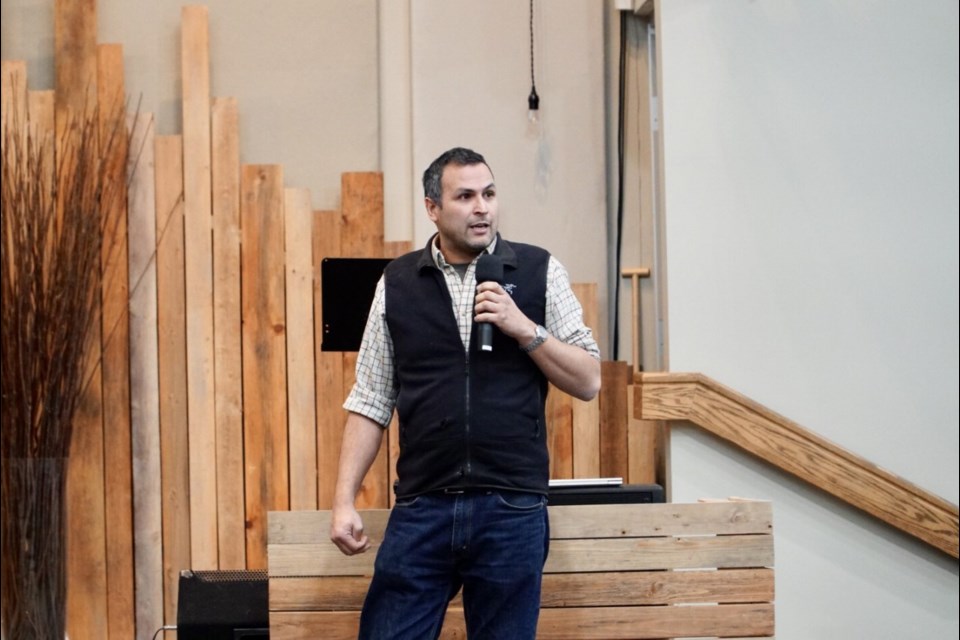Garibaldi Estates residents voiced their desire for gentle density in their neighbourhood — like cottage houses and carriage homes — but said a strong, 'No' to larger-scale density like six-storey condo towers.
The District's neighbourhood planning process for the Garibaldi Estates is starting another phase on Feb. 14, which will involve brainstorming for possible land-use scenarios.
In response, residents of this neighbourhood organized a town hall meeting on the evening of Feb. 6 at Squamish Baptist Church.
The planning process started back in 2021, and is part of the municipality's ongoing efforts to create blueprints for future development in each major neighbourhood in Squamish.
However, in this case, some residents of the Estates felt this was a way for the District to impose unwanted densification in their neighbourhood, which they expressed back in a town hall event in 2021.
On Monday, the organizers hosted another town hall at the Squamish Baptist Church that was attended by dozens.
The event featured three talks, each from a concerned resident.
Target density
Paul Kindree's presentation emphasized that the District needs to create appropriate target densities for each of its neighbourhoods.
"I think we're growing a little too fast," said Kindree. "We need to take a step back and take a breath — make sure we can keep up with the infrastructure."
He noted that one of the incentives for densification is the concept of the 15-minute city, which is the idea that all amenities should be within a 15-minute walk.
"That's a great concept, not one we can really do here in Squamish though, because all our neighbourhoods are so dislocated," said Kindree.
He also compared densities between different municipalities.
By his calculations, Kindree noted that Squamish has 618 hectares of residential property. The latest census states Squamish has a population of roughly 23,800 people.
When dividing the number of people by the amount of residential properties, he said he found that Squamish has a density of 38.5 people per hectare.
However, roads take up about 20% of the 618 hectares of residential property, he said. When roads are removed from that number, that leaves 494 hectares left over.
Dividing that amount by Squamish's population leaves a density of about 48 people per hectare, Kindree said.
"Squamish suddenly jumps up to 48 people per hectare, which is just below Vancouver at 55," he said.
Roads and transit
Estates resident Devin Biln also gave a presentation.
His talk focused on the road and transit network of Squamish. He examined recommendations that were generated from reports commissioned by past municipal or provincial governments.
Biln noted that there were an extensive amount of suggestions to expand road infrastructure in some of those reports.
There were recommendations to widen the highway to six lanes and create more access points to the Sea to Sky.
There were also suggestions about creating roads that would connect areas on the east side of the highway in a similar way that Government Road connects neighbourhoods on the west side.
Many of these recommendations, which would've helped accommodate or manage growth, have not been implemented, he noted.
Livability
Shân Warburton also gave a talk, speaking from the viewpoint of a parent with young children.
"I feel very strongly that it makes no sense to cram more people at the dinner table when you don't have enough food for the ones that are already there," said Warburton.
She said housing prices have become unaffordable for renters and owners.
"There's so many opportunities here to think outside the condo box," said Warburton. "For most who live and aspire to live in Squamish, condo living is a stop-gap on the way to a single-family home. So the more we limit the single-family home stock, the more unattainable it would be."
She also noted that there isn't enough space for vehicles.
"It's essential to have a vehicle to access all the recreation that's overwhelmingly the reason why people want to live here in the first place," said Warburton.







